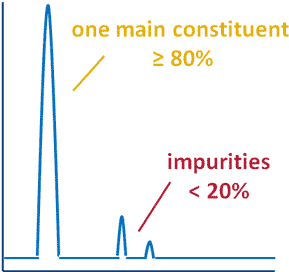What is a substance?
What is a substance?
A substance is a chemical element and its compounds in the natural state or the result of a manufacturing process.
In a manufacturing process, a chemical reaction is usually needed to form a substance.
Chemical (A) and chemical (B) are put together and react to form the substance C. Compound C is a substance made by the reaction of A and B.
Examples of substances are:
- metals
- solvents, such as acetone
- dyes and pigments
- diesel and other fuels.
REACH registration obligations only apply to substances.
Substance types
There are three main substance types.
You have a mono-constituent substance when one main constituent makes up at least 80% of the substance.
A mono-constituent substance is named after the main constituent. Its impurities do not need to be mentioned in the name.
In a mono-constituent substance, one main constituent is present at a concentration of at least 80% and the impurities count for less than 20% of the composition of the substance.
You have a multi-constituent substance if your substance consists of several main constituents. Each of these main constituents will be present at a concentration of between 10% and 80% in the substance.
A multi-constituent substance is named as a "reaction mass of the main constituents" present in the substance.
In a multi-constituent substance, each of the several main constituents is present at a concentration of between 10% and 80%. The impurities count for less than 10%.
UVCB stands for unknown or variable composition, complex reaction products or of biological materials. If you have a UVCB substance, your substance has many different constituents, some of which may be unknown. The composition can be variable or difficult to predict.
UVCB substances are often not fully identifiable and therefore you need to provide a description of the manufacturing process and other types of information, such as a boiling range.
In general, the name of a UVCB substance is usually a combination of the starting materials and process.
A UVCB substance has many different constituents, some of which may be unknown. The composition can be variable or difficult to predict.








